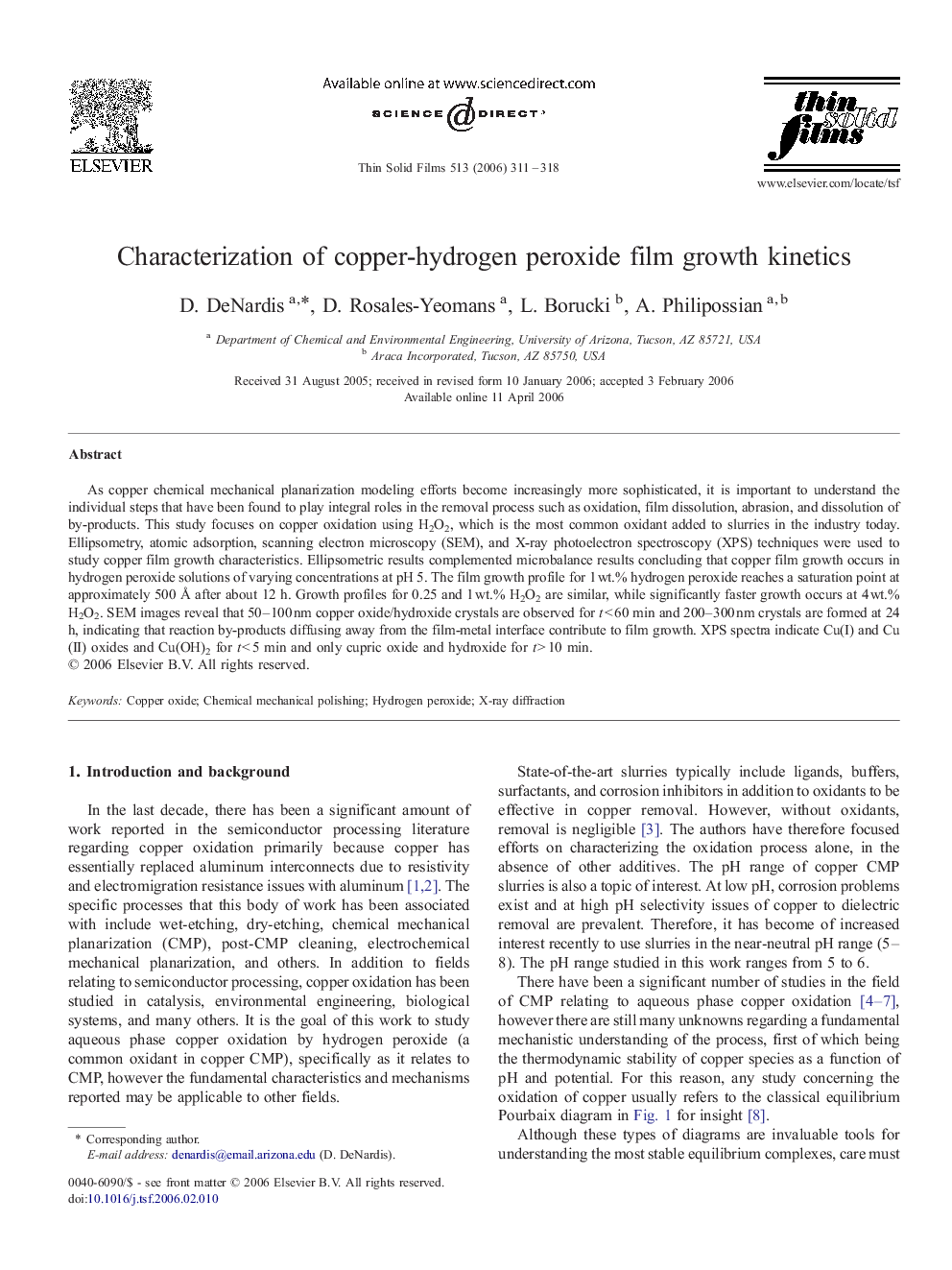| Article ID | Journal | Published Year | Pages | File Type |
|---|---|---|---|---|
| 1676029 | Thin Solid Films | 2006 | 8 Pages |
As copper chemical mechanical planarization modeling efforts become increasingly more sophisticated, it is important to understand the individual steps that have been found to play integral roles in the removal process such as oxidation, film dissolution, abrasion, and dissolution of by-products. This study focuses on copper oxidation using H2O2, which is the most common oxidant added to slurries in the industry today. Ellipsometry, atomic adsorption, scanning electron microscopy (SEM), and X-ray photoelectron spectroscopy (XPS) techniques were used to study copper film growth characteristics. Ellipsometric results complemented microbalance results concluding that copper film growth occurs in hydrogen peroxide solutions of varying concentrations at pH 5. The film growth profile for 1 wt.% hydrogen peroxide reaches a saturation point at approximately 500 Å after about 12 h. Growth profiles for 0.25 and 1 wt.% H2O2 are similar, while significantly faster growth occurs at 4 wt.% H2O2. SEM images reveal that 50–100 nm copper oxide/hydroxide crystals are observed for t < 60 min and 200–300 nm crystals are formed at 24 h, indicating that reaction by-products diffusing away from the film-metal interface contribute to film growth. XPS spectra indicate Cu(I) and Cu(II) oxides and Cu(OH)2 for t < 5 min and only cupric oxide and hydroxide for t > 10 min.
